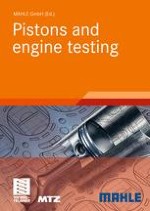2012 | Buch
Über dieses Buch
The ever-increasing demands placed on combustion engines are just as great when it comes to this centerpiece - the piston. Achieving less weight or friction, or even greater wear resistance, requires in-depth knowledge of the processes taking place inside the engine, suitable materials, and appropriate design and machining processes for pistons, including the necessary testing measures. It is no longer possible for professionals in automotive engineering to manage without specific know-how of this kind, whether they work in the field of design, development, testing, or maintenance. This technical book answers these questions in detail and in a very clear and comprehensible way.
Anzeige
